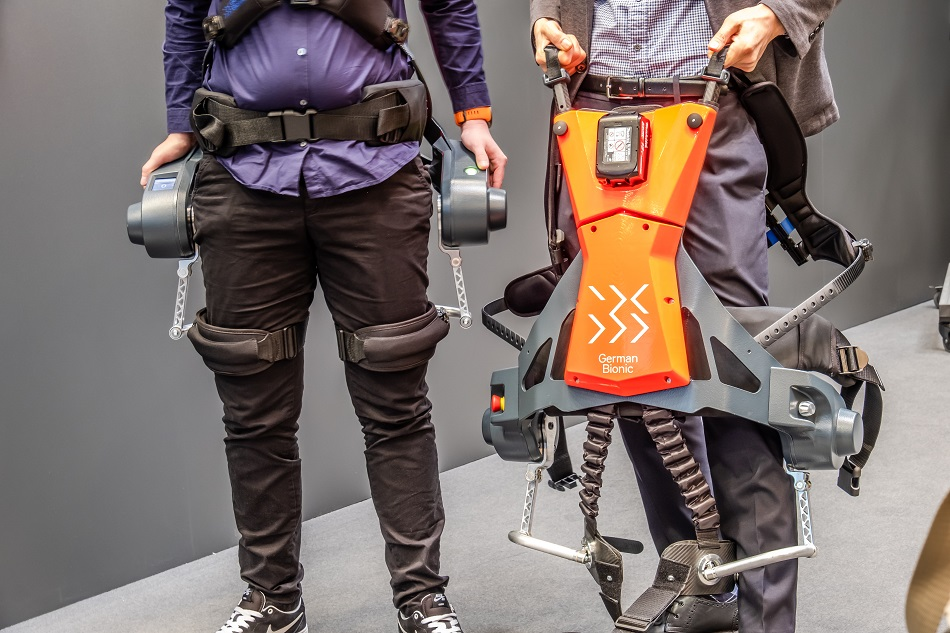Oct 8 2012

Image Credit: Lukassek/Shutterstock.com
Mechatronic engineering can be defined as the synergistic combination of electronic, mechanical, control, and computer systems. The application of mechatronic engineering in human biology is known as biomechatronics. It is a key area of study in biomedical engineering.
The components of biomechatronic systems are:
- A human subject – This subject represents the “bio” part of biomechatronic systems and makes them unique.
- Stimulus – A stimulus is an input delivered naturally or mechanically to a feedback system. Common stimuli include a tone, an electrical stimulus, a tactile stimulus, a light source, and airflow.
- Sensors and transducers – These are devices capable of transforming physiological outputs such as temperature or pressure into electrical signals.
- Signal processing systems – These modify the electrical signal into an output signal that can be used. This involves transforming analog signals to digital signals.
- Recording and display systems – A biomechatronic device is used to track a physiological process or a response, and then display and store the information in a user-friendly format for analysis and future use. An electrocardiograph is a common example of a biomechatronic device using recording and display systems.
- Feedback elements – Processed sensor outputs can be connected to the stimulus by a feedback link, which can be further processed using control elements. This feedback loop is helpful in the synchronization of the stimulus.
Applications
Biomechatronics have various biomedical applications. They are used in:
- Bio-interfaces for diagnostics and control
- Robotics for high-speed screening and analysis
- Passive and active prosthetic limbs and joints
- Bio-electrical signal processing
- Sensing and biofeedback
- Medical imaging and diagnostics
- Rehabilitation systems
- Neural and brain stimulation
- Tele and robot-assisted surgery
- Mobility aids
- Home care and elderly care
- Implants
In the future, biomechatronics could also be used in:
- Brain prostheses
- Autonomous hospitals
- Memory down/upload
- Nano-machines and micro-robots
- Powered exoskeletons
- Hyperspectral vision – artificial eyes
- Pervasive neural interfaces
Good Biomechatronic Design
Hearing and balance, vision, respiration, and movement are some of the key aspects of good biomechatronic design.
Hearing and Balance
Virtual reality can be used for stimulating the visual-vestibular. A low-cost and flexible system is built for determining the subject’s sway response to galvanic vestibular stimulation. The components of this system include:
- Electrical stimulator and electrodes
- Inertial measurement unit
- Bluetooth
- Microcontroller
- Nintendo Wii balance board
Vision
A handheld text reader and image pre-processing are utilized for performing optical character recognition (OCR). It is a device used in mobile phones for converting text into speech. It can be used for dewarping, interfacing to tesseract OCR, and enhancing poor illumination. The capability of a smartphone-based image processor can be evaluated for a visual prosthesis.
Movements of the eye and head are required to provide simulated prosthetic vision. Within a VR environment, two visual tasks should be carried out. The first task is identifying a room and the second task is finding an object in the room. Finally, the performance was assessed using different eye and head tracking combinations to move the visual mosaic.
Respiration
A doppler SIDS monitoring system was used to reduce the occurrence of SIDS. A 24GHz doppler radar produced phase information, which can read a baby’s breathing patterns. A mechanical lung simulator simulated the lung to reduce sleep-disordered breathing. It requires a programmable waveform and is inexpensive.
Chris Larkin developed an inexpensive fleisch pneumotachograph from low-cost materials. It works based on Poiseuille’s law. A fleisch cell consists of 190 syringe needles.
Sources and Further Reading
- Chapter 1. Introduction to Biomechatronics – EE Times. Published by SciTech Publishing.
- Brooker G. IBBW 2011. Biomechatronics. Australian Centre for Field Robotics.
This article was updated on 6th February, 2020.